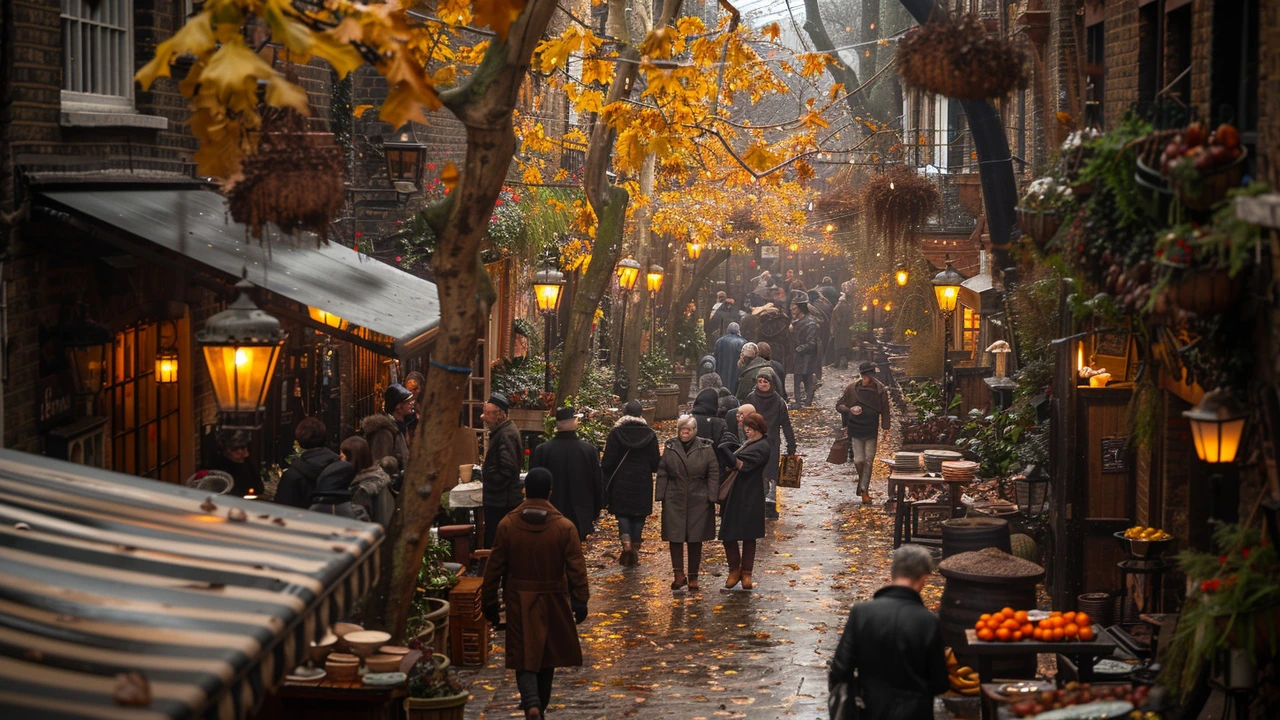Celebrating American Craftsmanship: A Dive into the World of Quality Handmade Goods
 Mar, 2 2024
Mar, 2 2024
The Enduring Legacy of American Craftsmanship
In the bustling narrative of progress and innovation, there's a quiet, steady pulse that has throbbed in the heart of America since its inception - the pulse of craftsmanship. American craftsmanship is a rich tapestry woven with the threads of history, culture, and passion for making things by hand. It's a legacy passed down through generations, a tradition steeped in the values of quality, durability, and beauty.
Let's turn the clock back to the early days of American history. Craftsmanship was not just a choice; it was a necessity. From the furniture that graced the homes of the early settlers to the tools used to cultivate the land, everything had to be made by hand. This necessity birthed a culture of craftsmanship that placed a premium on skill, precision, and creativity. Artisans were revered members of their communities, and the goods they produced were a testament to their artistry and hard work.
Fast forward to today, and the landscape of American craftsmanship has evolved, but the core ethos remains unchanged. In a world dominated by mass-produced goods, there's a growing community of artisans who are dedicated to the craft of making things the old-fashioned way. They're the torchbearers of tradition, champions of quality, and advocates for the kind of authenticity that only comes from something made by human hands.
Challenges in the Modern Marketplace
In the pursuit of preserving this tradition, craftsmen today face a myriad of challenges. The rise of globalization and the dominance of mass-produced goods have posed significant hurdles for artisans trying to compete in the market. There's a constant struggle between the efficiency and cost-effectiveness of industrial production and the time-consuming, labor-intensive process of craftsmanship.
But it's not all gloom and doom. The very challenges that threaten the survival of craftsmanship also serve as catalysts for innovation and adaptation. Many artisans are finding ways to marry traditional techniques with modern technologies, creating products that are not only high in quality but also relevant to today's consumers. This fusion of past and present is breathing new life into the world of American craftsmanship, making it more accessible and appealing to a broader audience.
Another challenge comes from the consumer side - the battle for the hearts and minds of buyers. In a market saturated with cheap, disposable products, convincing people of the value of investing in handmade goods is no small feat. It requires educating consumers about the craftsmanship process, the time, effort, and skill that go into making each piece, and the inherent value of owning something unique and enduring.
The Vibrant Community of American Makers
Despite these challenges, or perhaps because of them, the American artisan community is thriving. Across the country, from urban centers to rural retreats, there's a vibrant network of makers who are dedicated to their crafts. These artisans come from all walks of life, each with their own unique story, but they're united by a common passion for creating high-quality, handmade goods.
This community is not just about making things; it's about making connections. Artisans often collaborate, sharing knowledge, resources, and skills to help each other grow. There's a sense of camaraderie and support that's rare to find in other industries. Moreover, these makers are deeply connected to their local communities, often sourcing materials locally and participating in community events and markets.
Technology has also played a significant role in the resurgence of the artisan movement. Social media and online marketplaces have allowed artisans to reach a global audience, showcasing their work to people who might never have discovered it otherwise. This digital connectivity has opened up new opportunities for artisans to grow their businesses and share their passion with the world.
Appreciating and Supporting Quality Handmade Goods
As consumers, we play a crucial role in the survival and growth of American craftsmanship. By choosing to invest in handmade goods, we're not just buying a product; we're supporting a tradition, a community, and a way of life. But how do we identify and appreciate quality handmade goods in a market flooded with options?
First and foremost, it's important to educate ourselves about the craftsmanship process. Understanding the time, effort, and skill required to create something by hand can help us appreciate the value of artisanal products. It's also helpful to learn about the materials used, the techniques employed, and the stories behind the products and their makers. This knowledge not only enriches our appreciation but also informs our purchasing decisions, allowing us to make more conscious, meaningful choices.
Supporting local artisans and crafts fairs is another way to engage with the community of makers and discover unique, high-quality handmade goods. These events offer a great opportunity to meet artisans, learn about their work, and see the craftsmanship process up close. Additionally, purchasing directly from artisans, whether in person or through their online platforms, ensures that more of the proceeds go to the craftsmen themselves, supporting their livelihoods and enabling them to continue their practice.